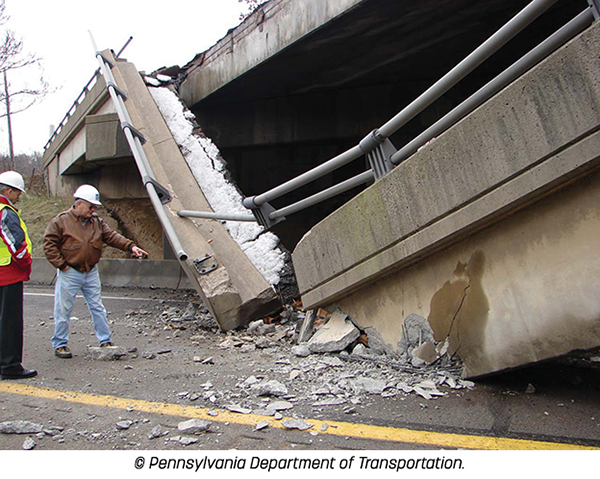Rebar is an essential part of concrete construction. While concrete is very strong in compression, it is relatively weak in tension. Casting rebar into concrete compensates for this imbalance.
However, rebar is made from steel, and steel can corrode over time. Preventing rebar corrosion is essential to maintaining the designed strength throughout the projected life of the structure. Failing to address the issue of corrosion could lead to high and unexpected repair or replacement costs or even a catastrophic failure costing human lives. In fact, the American Road and Transportation Builders Association estimates one in three bridges in the United States, some 200,000, requires repair or replacement.
The industry needs a breakthrough. Allium Engineering, an MIT start-up created in 2022, may have provided just that.
The company suggests its rebar technology can triple the lifetime of structures at a fraction of the cost of existing techniques and thereby reduce the need for maintenance and replacement. This means a potential 66 per cent reduction in steel and concrete production and the reduction in carbon emissions.
Allium’s technology adds a thin protective layer of stainless steel on top of traditional steel rebar, making it more resistant to corrosion. Adding the stainless cladding to the steel before the rolling process and the associated high temperatures avoids significant extra costs or disruption of existing manufacturing methods.
“What comes out of the mill looks like regular rebar,” says Allium co-founder and CEO Steven Jepeal.

However, it’s the payoff down the road that really matters, he explains. The Allium-treated rebar is “just as strong and can be bent, cut and installed in all the same ways, but instead of being put into a bridge and lasting an average of 30 years, it will last 100 years or more.”
Corrosion in rebar can be caused by many different factors.
Pathways for oxygen molecules can be formed when concrete is poured. Exposure to oxygen and water can then cause an electrolytic reaction, forming a thin layer of oxidation on the steel, which transforms into rust. Salt can possibly enter the concrete formwork through cracks caused by temperature changes. Or perhaps carbon dioxide (CO₂), reacting with loose calcium, sodium and potassium ions, can reduce the pH in the concrete and therefore its rust resistance.
Minimizing the risk of corrosion at the outset of construction has traditionally been the best strategy. This is usually in the form of “cover,” that being the distance between the outside surface of the concrete and the reinforcing steel. Building codes often specify a minimum cover of between 25 to 75 millimetres. Pre-stressing the rebar can often compensate for the way loads are taken up within the concrete form.
Another technique sometimes used is an epoxy coating applied to rebar. However, studies suggest the effectiveness of Epoxy Coated Rebars (ECRs) is limited due to the inherent brittle nature of epoxy.
Project and building owners often turn to the ongoing post-construction monitoring of the rebar inside the concrete. This can be done in several ways beyond simple visual inspection.
Several non-invasive metering devices are available that use magnetic techniques or resistivity tests to measure the polarization resistance of the rebar and analyze the impedance of the rebar-concrete interface to assess corrosion activity. Others use infrared thermography, chloride monitoring and pH sensors. Most of these techniques use wireless devices like tablets to collect, analyze and store the data which can then be shared among project team members.
Steel corrosion across all industrial sectors is extremely costly. In its study of the impact of corrosion, NACE International the Worldwide Corrosion Authority, estimates the annual global cost of corrosion to be US$2.5 trillion.
“By using available corrosion control practices, it is estimated that savings of between 15 to 35 per cent of the cost of corrosion could be realized, ie. between $US 375-875 billion annually on a global basis.”
This explains the excitement surrounding Allium’s stainless steel rebar cladding.
About 50 tons of Allium’s stainless steel-clad rebar have already been used in construction projects in California and Florida, the company says. In March 2024, Allium Engineering raised a $3.25 million seed round to scale up its long-lasting steel manufacturing process, complete with a new facility in Boston. This facility will have the capacity to produce about 1,000 tons of its stainless-clad rebar annually.
Going forward, the company is looking to build more facilities closer to the steel mills with which it hopes to partner, eventually integrating their process into mill operations.
John Bleasby is a freelance writer. Send comments and Inside Innovation column ideas to editor@dailycommercialnews.com.





Recent Comments